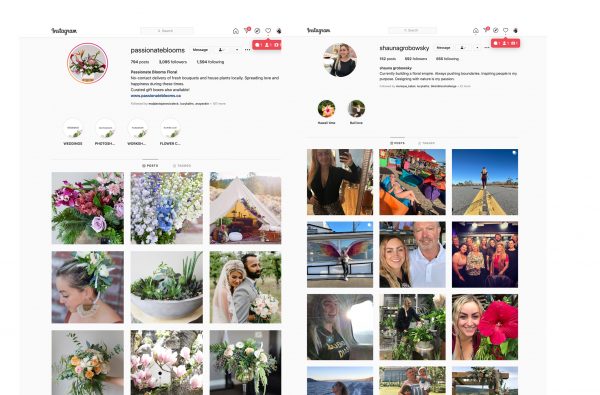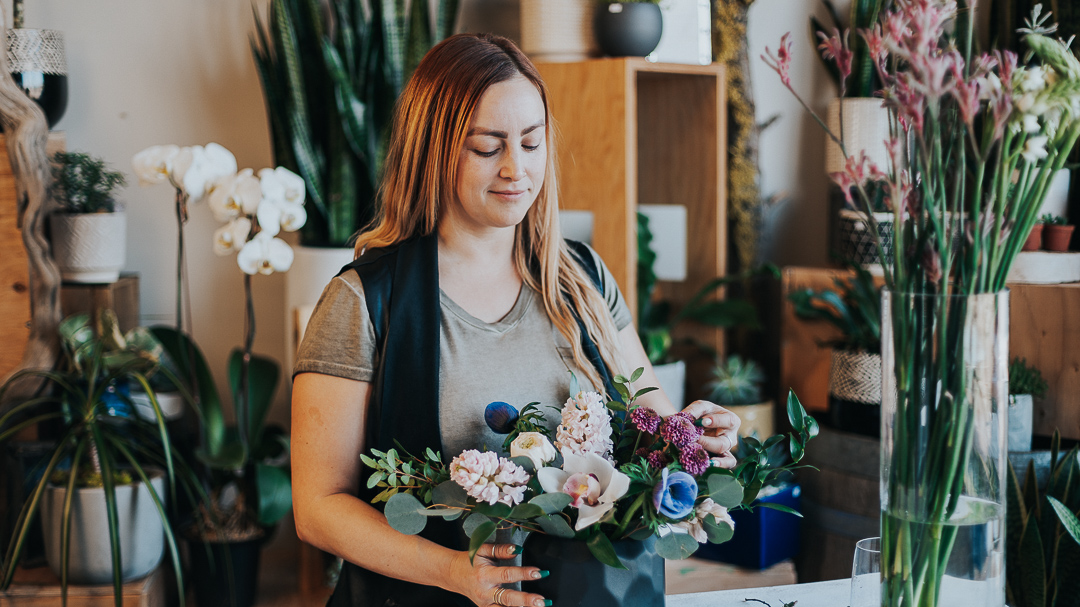There is a lot of confusion surrounding the difference between a personal brand vs. a business brand, but luckily Tina Walczak, our Chief Brand Officer, understands it well. In the below interview, one of our content strategists, Jake MacLaren, discusses how to build a personal brand, what pitfalls to avoid and how to separate brand from business with her.
Jake MacLaren: What’s the difference between a brand and a company?
Tina Walczak: Let’s focus on the brand portion first. A brand is the feeling or emotion people get when interacting with your product or service.
A company is the operational side of a business—it’s the people actually doing the work. It’s the chief technical officer doing his part and the CEO doing their part.
It comes down to the difference between function and the feeling. In other words, a brand focuses on conveying emotion, whereas a business is all about the work itself.
What’s the difference between a personal brand vs. a business brand?
When you’re thinking of a personal brand. You typically can imagine somebody’s face. You’ll see personal brands on Instagram and it’ll be somebody talking about themselves. For example, my Instagram is Tina Walczak but then there’s our business brand as well, which is Hiilite, where not just one face being represented, it’s the entire company.
A personal brand, is more centred around yourself. A business brand is more focused on what services and offerings you’re giving to the people who use them. You’re going to be dealing with potentially a lot more volume when you’re a business brand. A personal brand will connect with a very targeted, and focused audience.
You’re also still relying on emotion for a personal brand to people to build a connection in a deep way.
What is a personal brand business?
If you’re turning a personal brand into a business, it’s usually because you have something that people want to buy from you. If you are just saying nice quotes, and talking about what you ate for lunch, you may still consider yourself a personal brand.
Let’s use Shauna Grobowsky from Passionate Blooms for an example, she’s integrates both personal and business into her brand. For starters, she has her own account on Instagram where she posts about her personal life by sharing photos of her family, but she doesn’t sell any products. She might show pictures of her and her products, but she’s talking more about her personal life, without trying to sell the viewer anything.
Whereas on @passionateblooms (her company Instagram account) it’s all about flowers and her product, and less about Shauna and her personal life which makes it easier to understand what the business offers.

The ratio to what you do and what you sell is different on both. If you want to be selling on your personal brand, then think about what it is you want to sell and make it really easy for people to know what you offer.
When people go to your personal page, they don’t want to be marketed at. They don’t want to see a million posts about your product, but they would like to see your process. So, if you on your personal page, let’s use Passionate Blooms again as an example. If Shauna wanted to show off what she did, she could put that on her personal page. Maybe she could do a live video, or a video of her behind the scenes at the shop making a bouquet for someone’s wedding. And she could show that, rather than selling, hey, this is what I do.
Then people will more likely say, hey, is that something you can do for me? Rather than her saying on a post, “Hey, come to my shop, you could buy this product for however much,” she’s just showing people what she does through her passion.
I would say nine–to–one posts about your personal life to your products is a good ratio. I.e., nine posts about you and your life to one post about your products.
How do I separate myself from my business?
That’s a really good question. I think maybe asking yourself why you want to separate yourself from your business is important to do first. Are you posting something about yourself that you wouldn’t want people to know about you in regards to your business?
If you smoke pot in your personal life and you don’t want people to know that about you and your business life, then maybe you shouldn’t be posting it on your personal page either. Thinking about the intent and reason why you want to be separating first. Asking the question, “Why do I want to separate myself?” is a good starting point.
Consider any sort of implications as well. For example if I’m going to be posting this on my personal brand will this reflect negatively or positively on my business?
How do you create a personal brand?
A personal brand starts with your passion. As a kid, I would collect my brother’s surfing magazines. We lived on the island near Tofino and that was kind of the thing we did in our spare time.
I would spend hours cutting up his surfing magazines. I would cut out logos and photos and I would post them all over my room thinking about trying surfing.
One day we decided to go surfing for the first time. As I began to paddle out the waves, I realized how cold the water was and I had an immediate realization I didn’t want to do this. I didn’t want to be a surfer.
Right then and there, I knew that it wasn’t the surfing that I love. It was the feeling that I got from the visuals, the aesthetics, and from the identity of what branding, and what surfing actually meant.
When you think about a personal brand, you want to think about your story and when you got started in the in your career choice and your passion. I’m passionate about branding. I want to create that feeling for people, and I knew that from a very young age.
Going down into your history of when you first started your passion as a personal brand. You’ll know when you could start a personal brand when you connect with people and find something you love.
When you take it a step further and you actually create posts about your passion – and people like what you’re talking about – that’s when you know that you have something of value to add to people’s lives.
When you’re creating a personal brand, you can first start off with a social profile. It’s free. You can start off on Instagram, Facebook, LinkedIn—it really doesn’t matter. Just start getting your thoughts out and just seeing what feels comfortable. Once you’ve done that and you feel really passionate about it, and you feel driven and you want to do it more, then you can go to the next step, get a website, and start selling something to people.
Then the next step would be registering a domain name or registering a name and actually going through the incorporation part. If you need to hire people, you can do that then. Then you can set up the difference between a personal brand vs. a business brand with regards to your company.
What are some personal brand examples?
Chris Do, Steve Jobs, Tony Robbins, are some of the personal brands I’d recommend people look up and learn about, they do a stellar job. Elon Musk is the poster child of establishing the difference between a personal brand vs. a business brand.
Even Donald Trump – regardless of what your political stance is – has done a fantastic job. If he’s done one thing very well, I would say he’s branded himself exceptionally well. Whether you love a person or you don’t like them at all, I think there’s something to learn from all of the people who’ve done excellent personal branding.
What do you feel is a good personal brand statement?
Start with: “I help others”—talk about what value you bring.
Rather than say, “I’m so great,” start with by saying, “This is how I can help you.” I can’t give you an exact example (since they’re highly personal) but if you start off by asking yourself, “What value can I add?” you’ll come up with something that will connect with the right audience.
How do you develop a personal brand strategy and set yourself up for success in the future?
This can be really difficult, so don’t be too hard on yourself if you are just getting started. If you are afraid of putting your work out there, join the club, a lot of people are. Like Nike says, “Just Do It,” put your work out there, and don’t worrying too much about having a specific strategy, because you don’t know what people are going to jive with in regards to your brand.
Maybe you do this for about six months to a year. You’ve been posting consistently. You know what has gained traction. Now, what you’re going to do is develop an ongoing strategy, maybe using a marketing calendar, of a posting schedule. You’re going to figure out in six months I want to sell this product because people seem to really like it. They like what I say.
If you’re a personal brand and you sell shoes, and you love writing about shoes and you have your own shoe company as a personal brand, you should do the following. In, say, over the course of six months, task yourself with figuring out what kind of shoes people like.” Once you figure that out, be very strategic and post similar images and similar products like that on an ongoing basis through something like a marketing calendar to continue to get results.
Without failing, you can’t actually know what works and what doesn’t. Making that a part of your process is really important. It’s scary. We as a company have been practicing with our Facebook and trying different types of posts. Some work really well and some don’t. However, it has given us an understanding of what works, what to do more of, and what people want to see.


